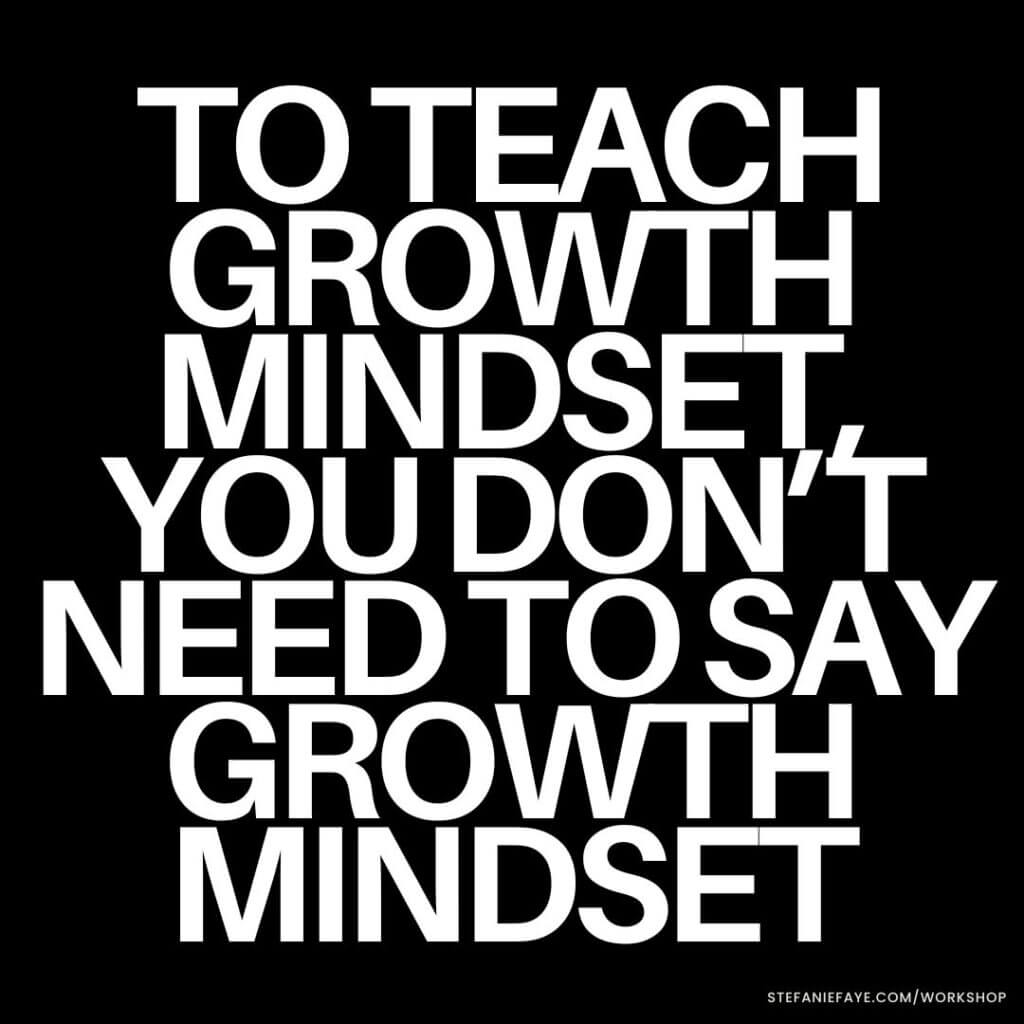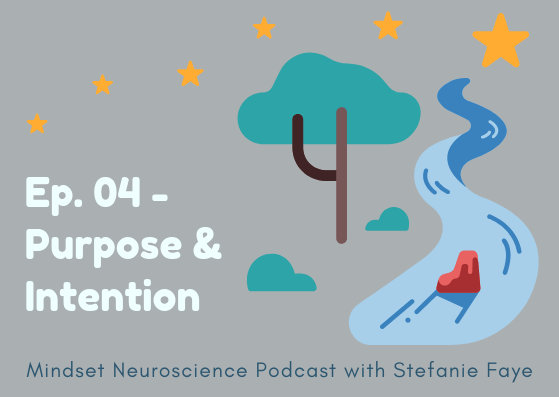Years ago, when I started teaching students and teachers about neuroplasticity and 'Growth Mindset', I never actually used the phrase Growth Mindset. In fact, I had never even heard of it!
In the years that I studied the brain’s plasticity and presented this information to students, teachers, parents and professionals, I would explain how systems in the brain are built by our experiences - and that some of our repetitive thoughts, self-beliefs or internal narratives are influenced by who and what surrounds us… not necessarily because they’re true, healthy, or adaptive.

One of my first experiences teaching about neuroplasticity and the idea of brains (and therefore our life trajectory) being able to change with effort and intention was during my time as a school and family counselor. After seeing how positively my clients responded to this information, I decided I wanted more people to know about it. I suggested the topic of self-directed neuroplasticity and self-regulation to the leadership team at one of the schools I was working with…
..I found myself a week later in a gymnasium filled with 400 high school students and about 50 staff! For much of the presentation, most of the students stayed silent. To be honest, I don’t know if most of them were actually listening 🙂 ( I mean, we’re talking 400 high school students in one room…) BUT.. there were students who were on the edge of their seats. They raised their hands and asked thought provoking questions. They lingered after the presentation to learn more about self-directed neuroplasticity and other ideas. After that presentation, I had requests from multiple teachers to learn more about neuroscience and how they could offer this kind of information to their students.
Our Malleability Mindset
One of the students who came to me was experiencing a lot of anxiety, low self-esteem and feelings of depression. Through our explorations of neuroplasticity and the malleability of her brain-body systems, she was able to see herself in new ways.
She saw that her internal dialogue was based on repetitively activated brain networks. She also learned that the fact that they were constantly activating wasn’t because something was inherently wrong with her. And it wasn’t about whether these narratives were ‘correct’ or accurate.
They were neural patterns repeatedly activating due to previous and current experiences and influences from her home and social environments.
These influences and interactions were now internalized as beliefs (neural activation patterns) that formed her mindset about herself.
Through our exploration of this, she learned that her brain IS malleable. And because of this, she could update its activity by introducing new experiences and information to help her form new thought patterns, self-narratives and beliefs about herself.
After feeling chronically anxious and unheard by her previous counselors, I was able to use neuroscience to help this student feel seen, heard, and EMPOWERED. She went from being close to dropping out of high school to creating an after-school leadership group.
Our Mistakes Mindset
I also remember years ago working with a young man that was ready to abandon his science project. I had created a “BRAIN camp” through a wonderful education organization, where I taught students and staff about brain plasticity and self-regulation.
This young man came up to me after one of our workshops and told me that he had been feeling lost and helpless about a science project he had been working on. After learning about how his mindset was influencing his reactions to his mistakes, and that new attempts to make his contraption work would actually make his brain stronger and more adaptive, he took his robot out of the trash and decided to keep working on the project. He even told me that he realized that life was going to keep giving him “more and more mistakes and dips” that he would need to go through so he could build even more “brain strength”. His perseverance gave me extra strength and encouragement to keep sharing this kind of information.
How we teach Mindset matters.
Through all of these experiences, I didn’t have a word or specific phrase for what I was teaching.
I didn't use the phrase ‘growth mindset’ because I’d never heard of it. I just explained what I knew about the most recent research in neuroscience. I was explaining how the brain is an organ that is plastic and malleable, it can be shaped and molded into what we want it to be.
Leaders, parents, students and teachers resonated with my lessons because it reflected what they already knew. They could sense - deep down - that there was a power within them that they wanted to unleash and show themselves and the world.
I was able to give them an explanation for the change and growth they were experiencing- an explanation rooted in facts and science. Once people heard these principles of learning and the brain, they saw themselves differently. They would respond to this new information with their own new ideas or efforts to learn something they had never attempted before, to keep going on a project or skill they were about to quit, or try to create a new way of responding within their relationships.
Learning about the mechanics of learning and the malleability of the mind helped people see more clearly how they could shape their thinking, give their brains the stamina needed to try new things and see mistakes as data for their own evolution.
They learned that this new mindset didn’t happen because someone was simply using a catchphrase and saying “I know you can do it!”, but because the laws of nature and neuroplasticity could help them achieve it.
Through neuroscience, we can offer others a new way to look at themselves.
No matter what kind of mindsets we are surrounded by, with the right type of learning and support, we - as leaders and professionals - can help others play with new perspectives and use their minds in the brilliantly adaptive ways they are designed to be used.
This new perspective can completely change their trajectory by showing them that a person’s mindset can be a powerful catalyst to create change in their behaviors and abilities.
We can increase our ability to model and teach others about how to align with their most empowering mindsets in ways that feel authentic to us.
To this day, I rarely use the term growth mindset when I’m leading a workshop. I usually use it in writing as a reference point because of how many people have heard of it. But other than using it that way, I generally am focusing on how to help people see themselves as powerful, adaptive beings - and I do that from the launching pad of self-directed neuroplasticity and self-regulation. The phrasing and examples come from a more authentic place than any term or phrase could convey.
The way we get to a place of authentic guidance about Mindset happens in phases, layers, starts and stops.
In my experience teaching and inspiring others to adopt self-empowering mindsets, I have found the following 3-step process helpful. I call it L.I.T. (Learn Internalize Teach).
- Learn about the ‘mechanics’ of how the brain grows and changes through effort, mistakes and how we can use the power of neuroplasticity to update our beliefs and narratives about ourselves and things that come up in our lives;
- Internalize by reflecting on what happens to us as we are faced with a challenge, our own mistakes, perceived failures, resignation, imposter syndrome:
- Teach and model to others what we have learned and reflected on in terms of how our mindsets influence us and how we navigate them in helpful ways.
In the next article, we’ll explore more of the mechanics of how mindsets are formed so that we can find new ways to model, teach and inspire others to reflect on and update their mindset into one that empowers them for long-lasting growth, joy and learning.
In my free mindset workshop, we will go into something I call the ‘Super-Regulators Mindset’ and how it fills in the gaps that most ideas about growth mindset leave behind. (if you’ve registered,thank you and I’m excited to connect with you! If not, you can check it out here - it’s October 8th. If you can’t attend live, you’ll get the recording 🙂


